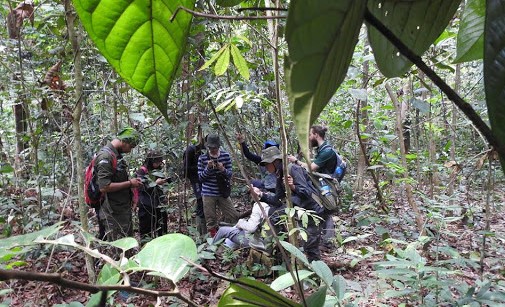RIDDEN BY THE FREE RIDERS
The process of implementing green growth and sustainable landscape management is supported by nine new policies that consistent and support the KELOLA Sendang program. The policy involves government intervention, starting from the South Sumatra Provincial Government, stakeholders, until DPR. Thus, it is hoped that the long-term sustainable landscape management projects can be realized.

The final chapter analyzes critical issues in landscape management. In the first sub-chapter, the structure of the project and its evolution is discussed. There are five elements in the operational structure of the KELOLA Sendang project, which are institutions, knowledge management, livelihoods, production, and conservation. These five elements have 21 indicators to determine the success.
These five elements underlying the birth of the KELOLA Sendang masterplan. This masterplan divides the Sembilang-Dangku area into three, namely Area Model 1 (Production Forest Management Unit (KPHP) Meranti area and Dangku Wildlife Sanctuary (SM)), Area Model 2 (Peat Hydrological Unit (KHG) area of Merang River and Ngirawan River), and Model 3 Area (Nineg National Park (TN) area). This complex institution makes all parties involved do not ignore the formal structure, so that the KELOLA Sendang program can be successfully implemented.

Several foresters in the Meranti forest area.
Source: dishut.sumselprov.go.id
On the other hand, the capacity and commitment of development actors in the regions is also becoming one of the focus. In terms of regional development, the Human Resources (HR) aspect of the bureaucratic apparatus is very important. The question is, how to build the capacity of development providers in the context of landscape governance? The cultural approach strategy is becoming the answer to this question.
The cultural approach strategy has four outputs, which are long-term agenda developed by local governments and companies, pioneer figures, new institutional characters, as well as artistic innovations and creative works containing values developed by KELOLA Sendang. The four outputs will be implemented in three Model Areas, and each Area will have its own success model.
Meanwhile, the scientific-technocratic side also has its own issues. This scientific-technocratic approach relies on experts who can demonstrate how the sophisticated tools work on which the KELOLA Sendang program is based on. However, the KELOLA Sendang project apparently lacks experts. The problem was later resolved thanks to the good cooperation of government actors. Another problem is the inaccuracy of the results due to various methods used in the field, such as the top-down method, scientific-technocratic, participatory, until politics in the landscape. This should have been anticipated in the early phase of KELOLA Sendang.
Other than that, another point that should be taken into consideration is the sustainability of the KELOLA Sendang program. This sustainability challenge arises because collaborative actions have not shown real results or benefits for the welfare of the community. This is actually reasonable considering that the KELOLA Sendang program is a long-term project. So, if it haven’t shown significant progress for three to five years, that’s normal. In addition, there are also parties who turned out to be free riders and claimed the success, even though they did not make a significant contribution.
Not only that, the KELOLA Sendang program so far has also depended on pure funding from the program itself. And, as planned, the KELOLA Sendang program will end in March 2020. If there is no further initiative from the government or the community to continue this program, not only it will end the result, but the operational structure that has been running quite well could probably ended in vain. Managers and stakeholders needs to pay attention so that the KELOLA Sendang program does not end in the middle of its progress. (Steven Chaniago, PR team. Photo: www.researchgate.net).
Source: https://president.ac.id/p/175-feature/detail/1089-kelola-sendang-the-last-part-of-4-articles
